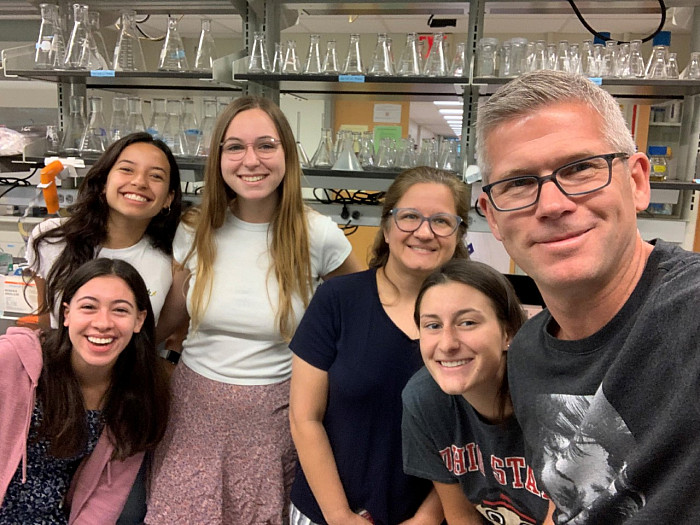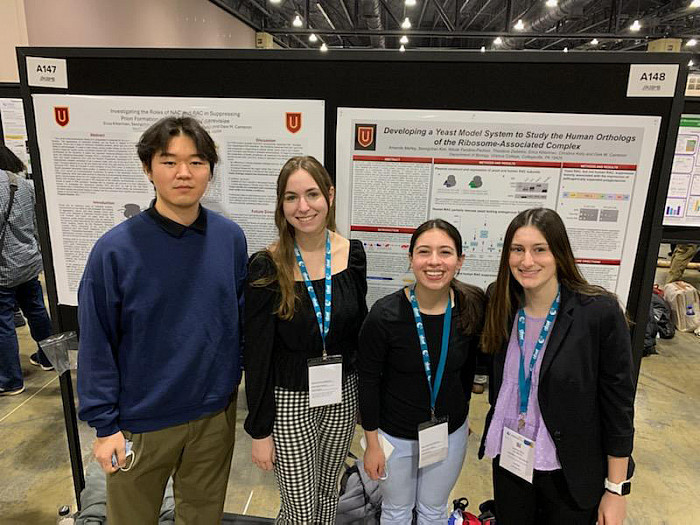Dr. Cameron and current Ursinus students recently published
Dr. Dale Cameron and members of his lab have recently published their work titled “The human ribosome-associated complex suppresses prion formation in yeast.” This work has been going on for several years, including about 10 students from the Cameron lab. Dr. Cameron’s research associate, Dr. Christina Kelly, also contributed to the work and helped to mentor students in the lab, and is a co-author of the paper. The papers’ background begins with proteins and their specific 3D folding necessary to determine their function in the body. If proteins are misfolded they cause different diseases including “Alzheimer’s, Huntington’s, and Parkinson’s diseases as well as the prion diseases like Creutzfeldt-Jakob disease in humans and “mad cow” disease in cattle.” Prions act as an infector and can make healthy cells misfold into prions spreading from cell to cell.
Dr. Cameron took the time to share his work and what the results show for future investigation, “Cells have evolved a variety of protein quality control mechanisms, such as “molecular chaperones” that protect proteins from misfolding. Many of these quality control systems are so important that they can be found in many different types of organisms, from single-cell yeast all the way to humans. So we can use a simpler organism, like yeast, as a model to understand how these systems work. In work from my lab that we published a few years ago, we focused on a specific set of chaperones, called the “Ribosome-associated complex” (or RAC), which protects proteins from misfolding while those proteins are being built by the cell. When we looked at a particular prion-forming protein, called Sup35, we found that the yeast RAC chaperones help to block it from switching into the prion shape. We engineered our yeast cells to make the human version of RAC instead of their own yeast version, and then we looked at whether the human RAC could block Sup35 from switching into the prion shape. And we found that it does! This is exciting because it suggests that the RAC chaperones are likely very important in humans for helping to prevent proteins from switching into disease-associated misfolded shapes as they are being synthesized by the cell.”
A current student, Amanda Marley, spoke about her experience in the Cameron lab as a researcher in the publication sharing, “One thing I always loved about doing research with Dr. Cameron and the lab is being able to continue learning outside the classroom in both concepts and laboratory techniques, but most importantly to contribute to research that is answering big questions within the field of protein misfolding and neurodegenerative diseases that affect the lives of people within society. Since the Cameron lab has a very student-led teaching style, it has always been very hands-on and collaborative within our small groups to design and execute our experiments and take them in directions that follow our own curiosities and ideas.”
Dr. Cameron and his lab continue their research using the system they discovered to determine “…whether the human RAC chaperones can block other disease-associated proteins from misfolding, like those that cause Huntington’s, Alzheimer’s, and Parkinson’s disease.” The exploration research takes on never stops, and the Cameron lab has published one part of their long scientific journey.


